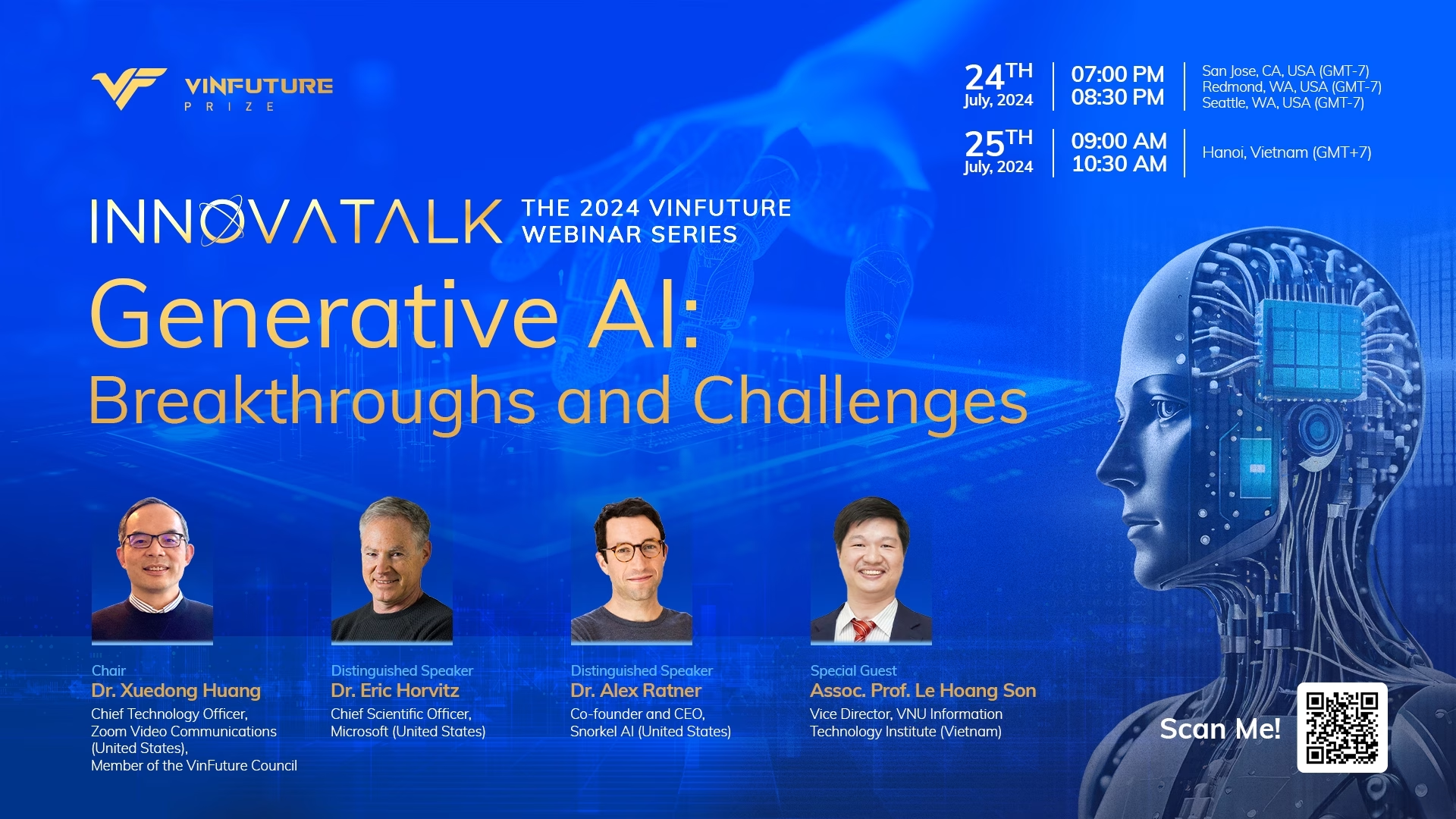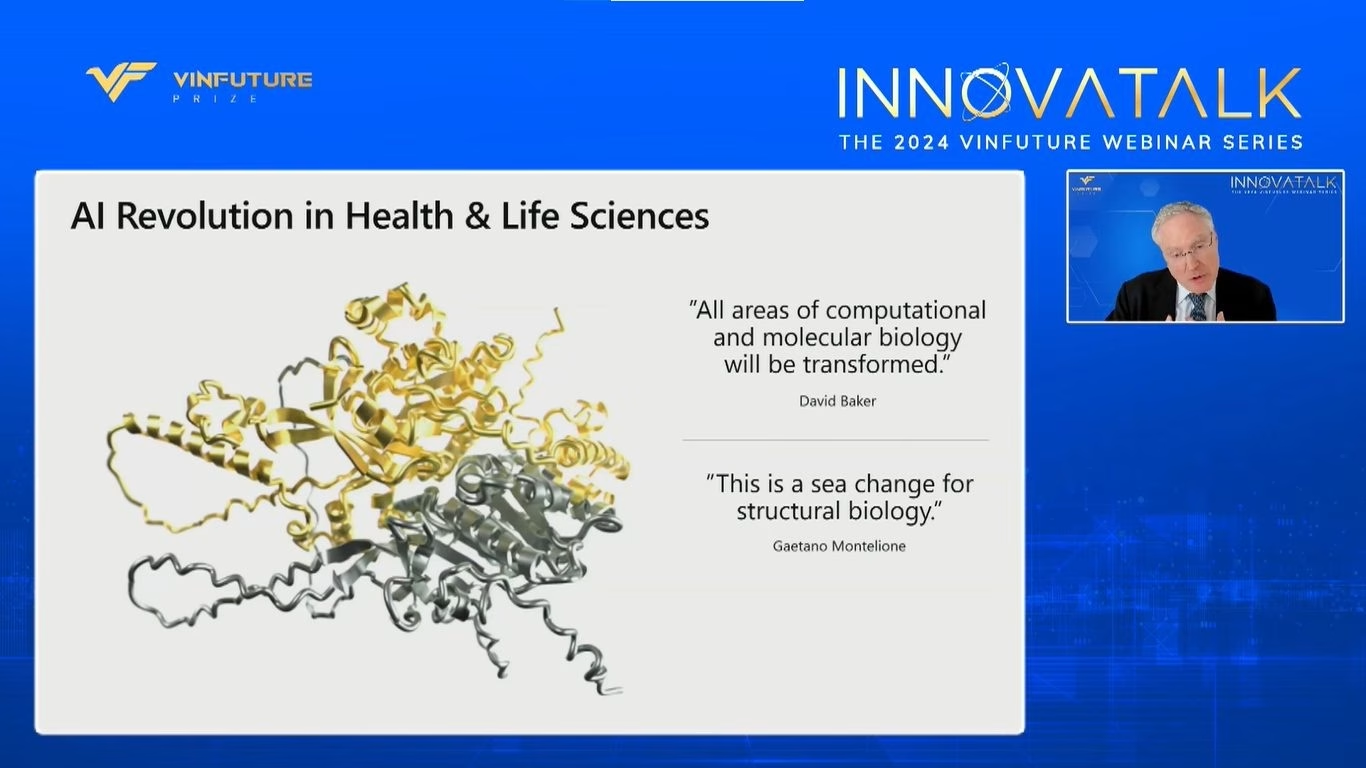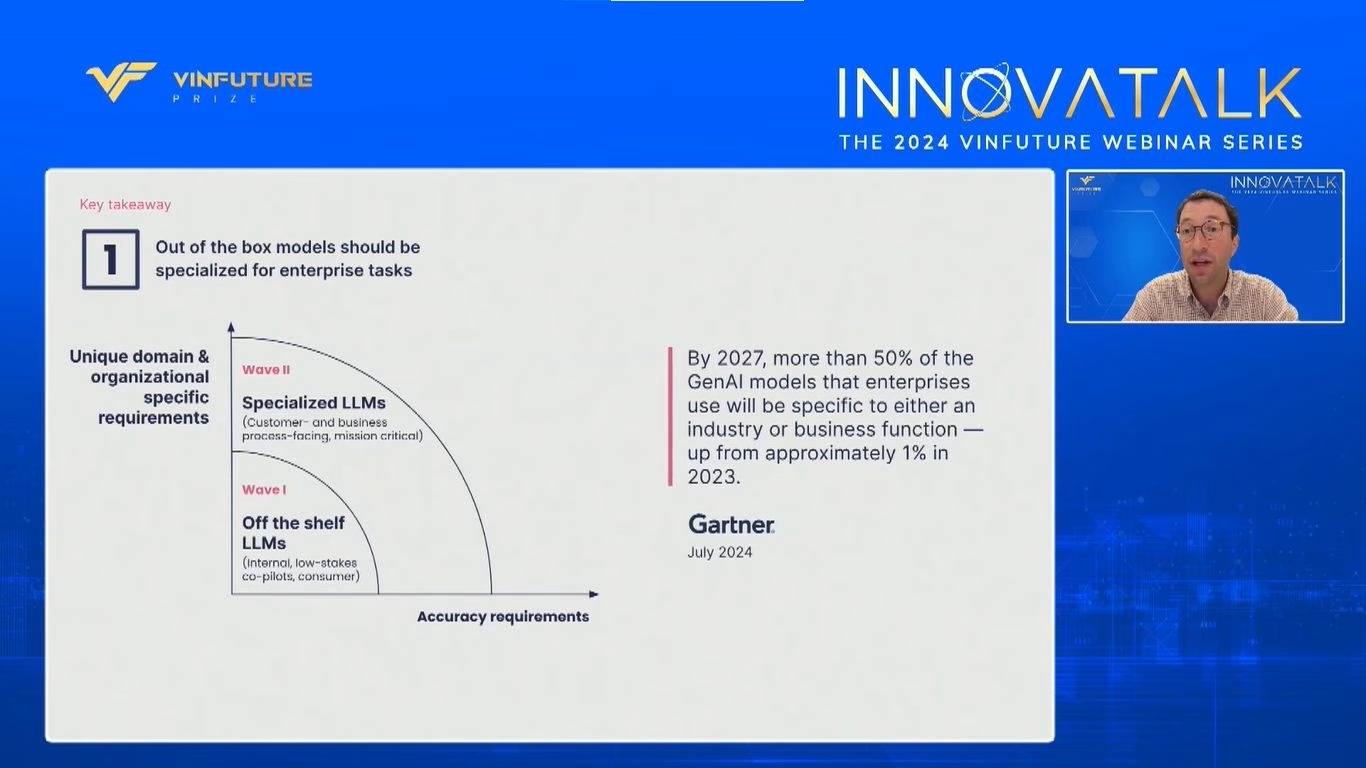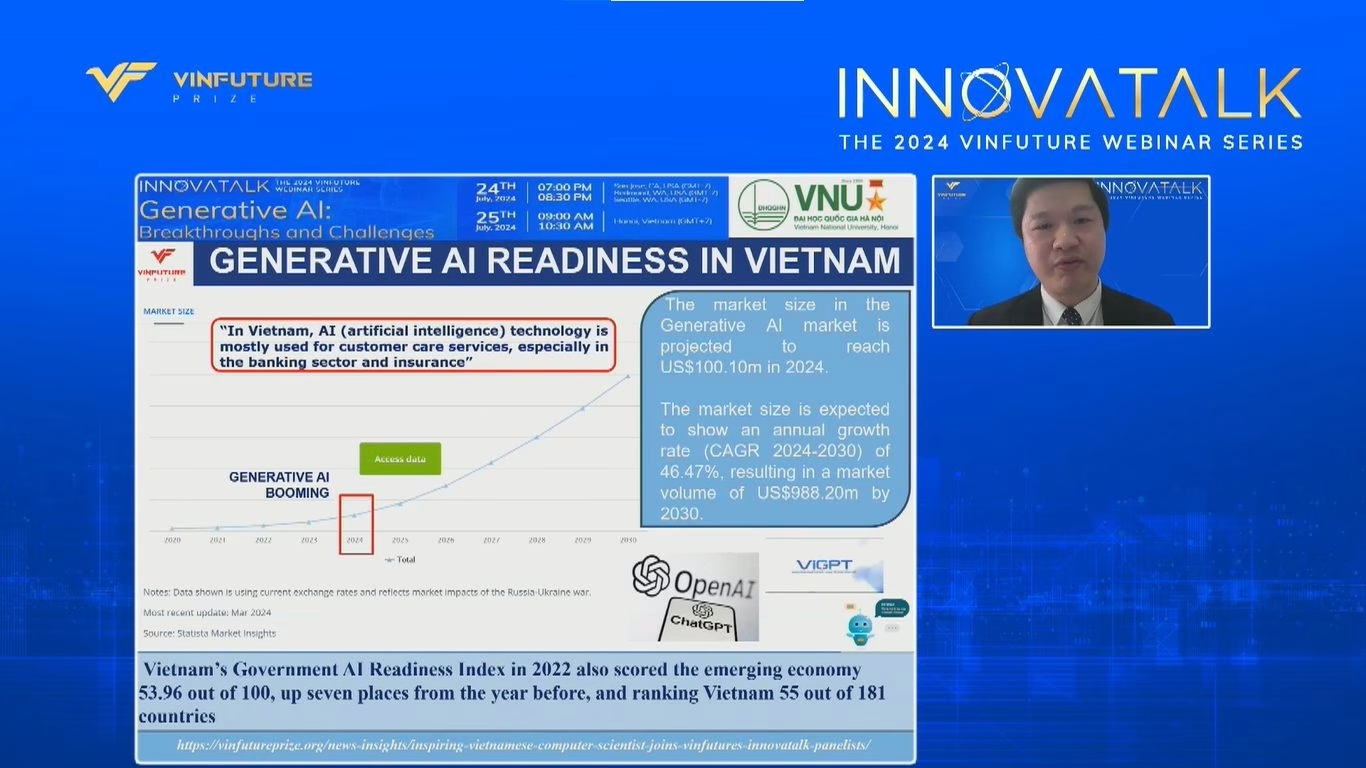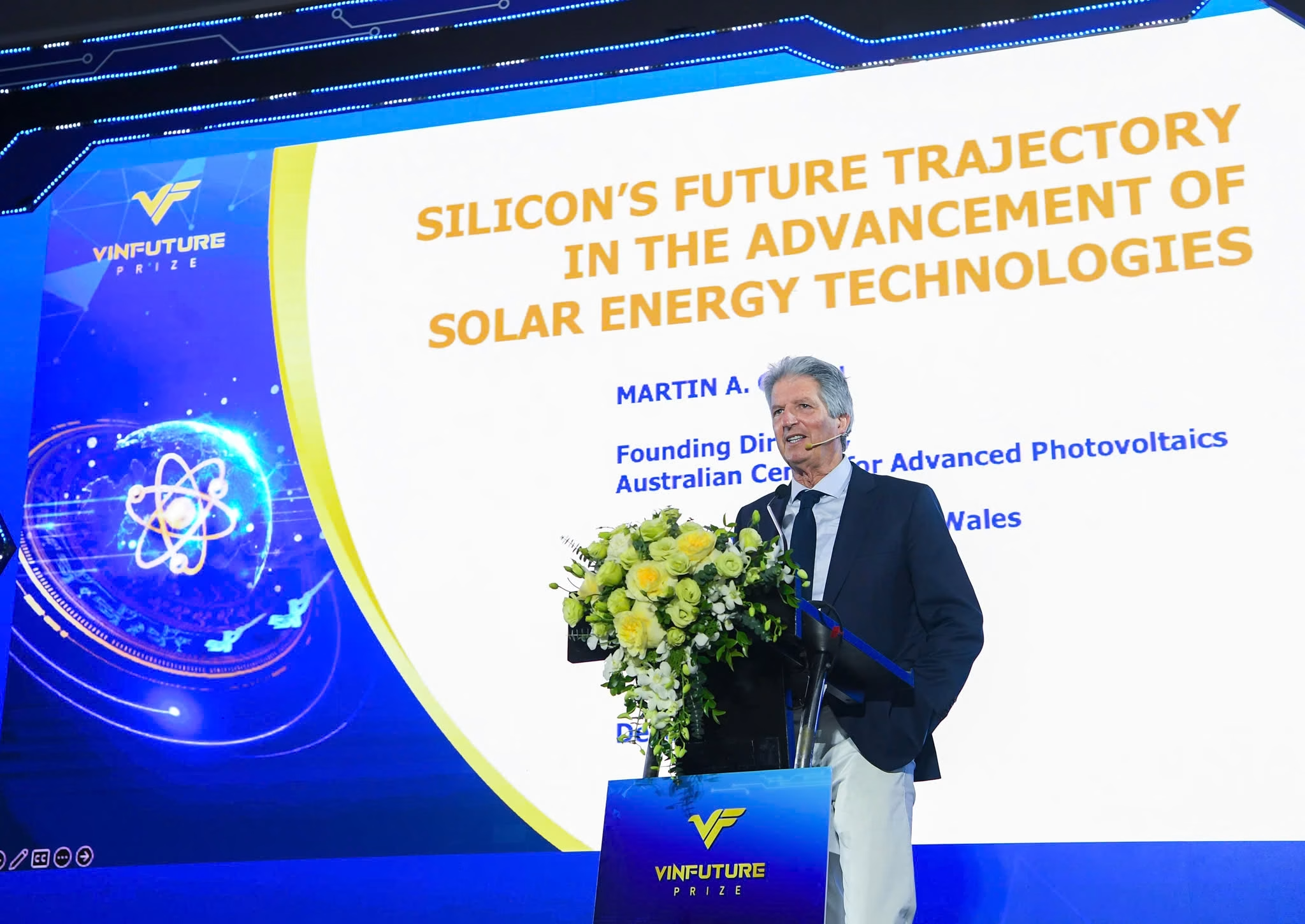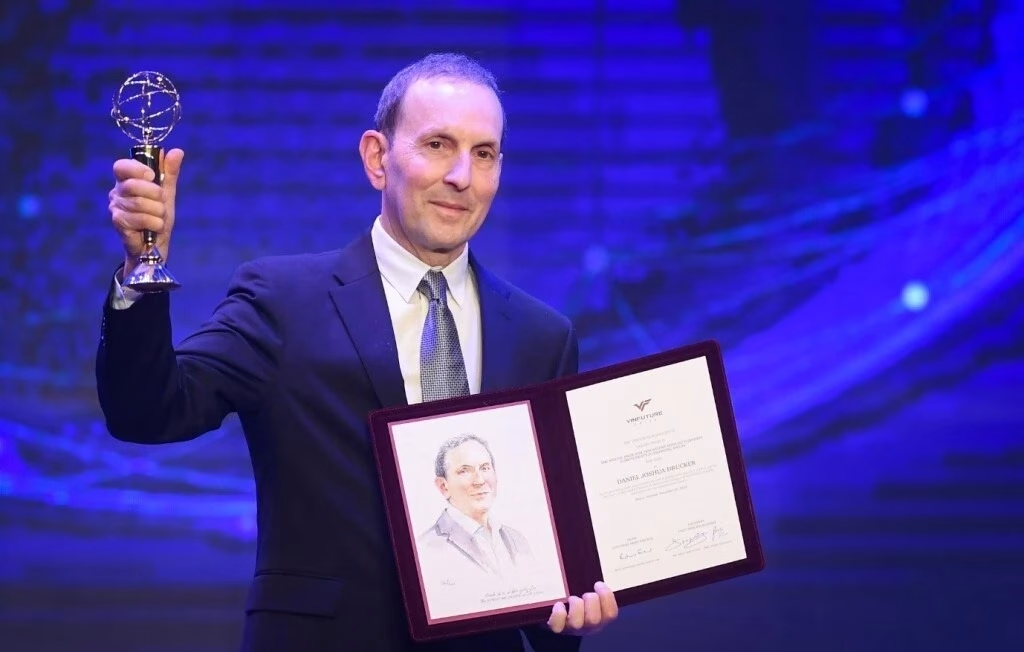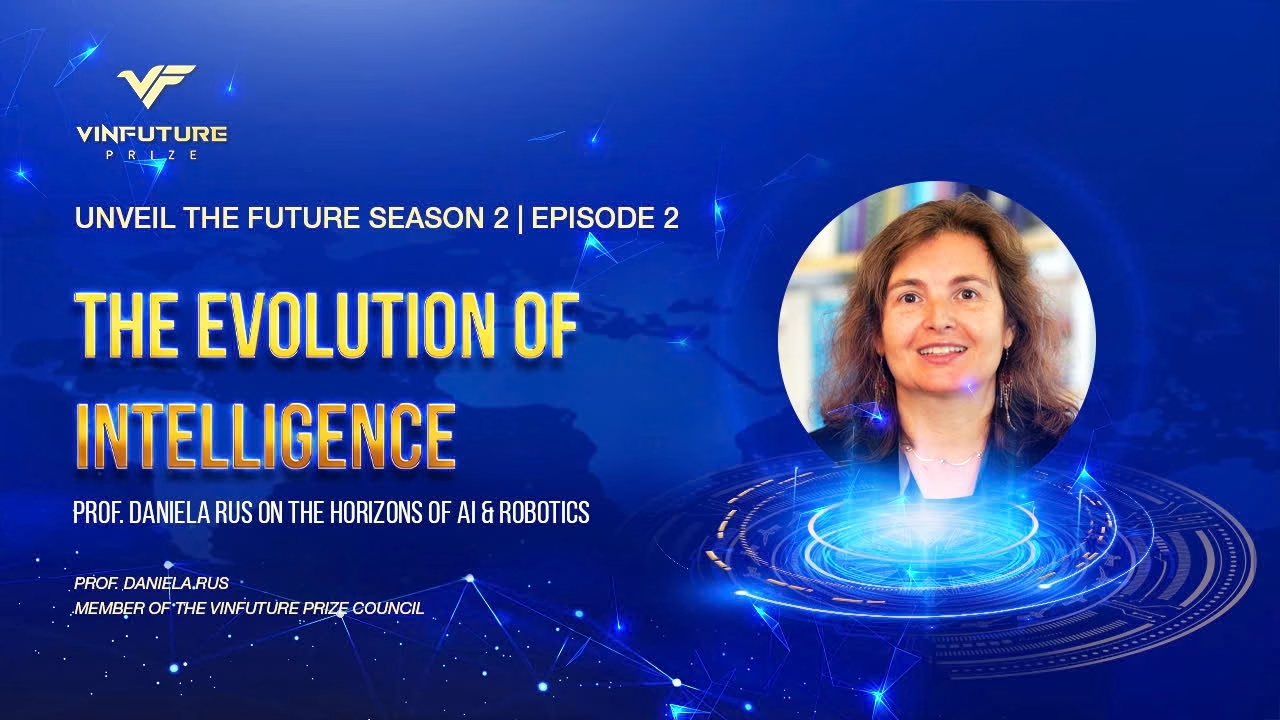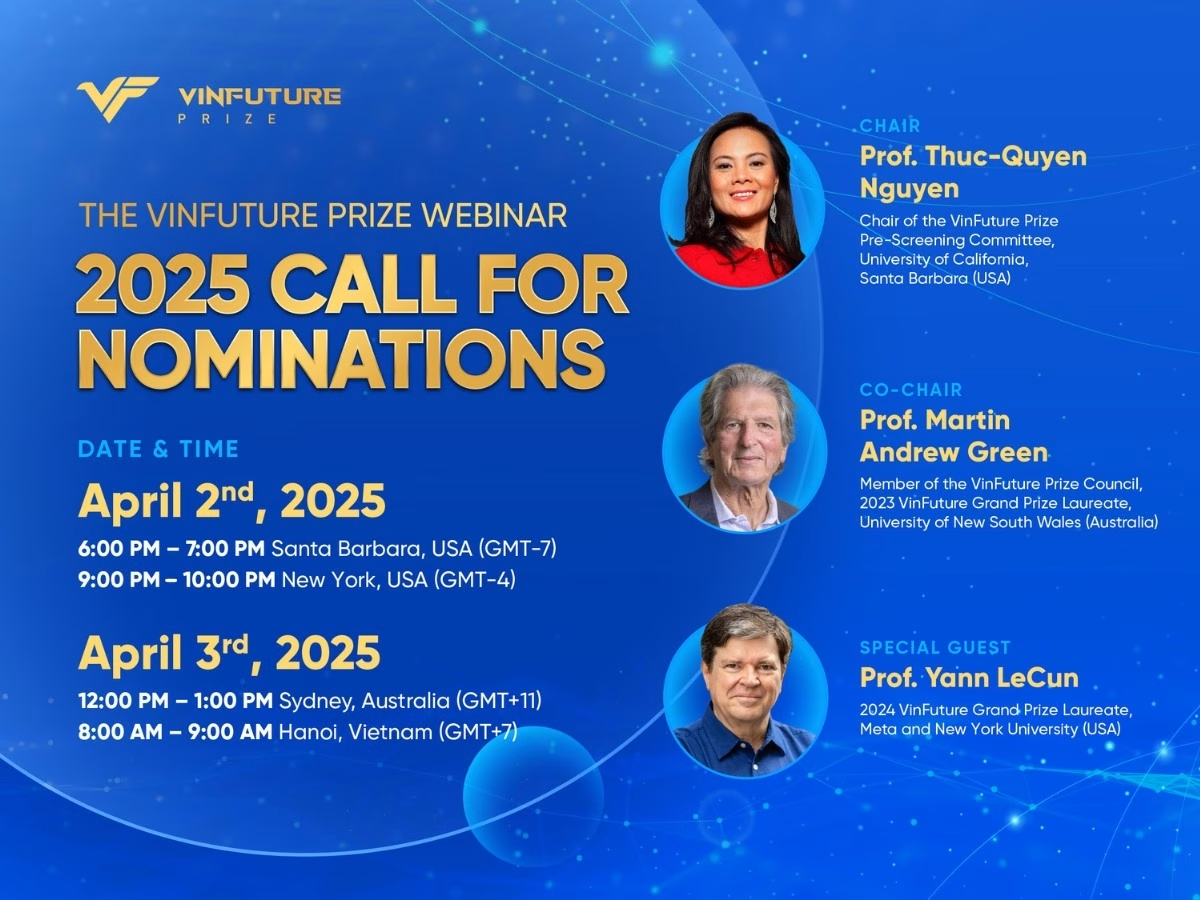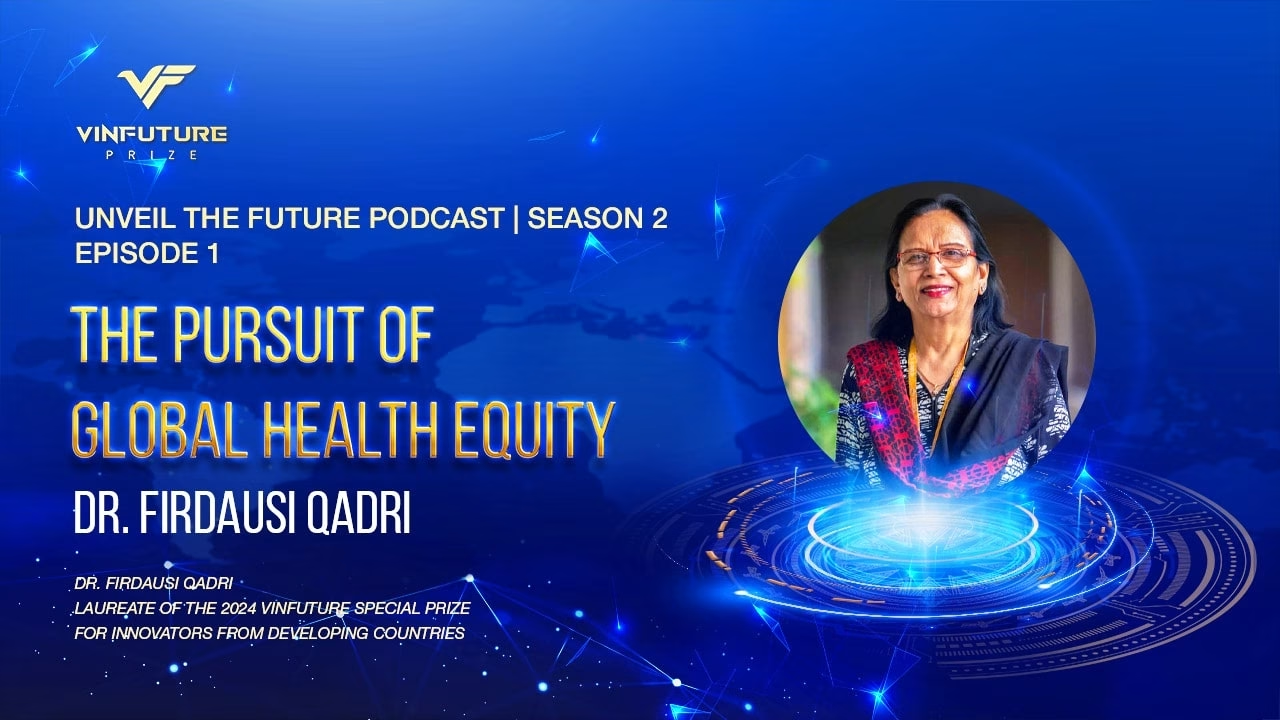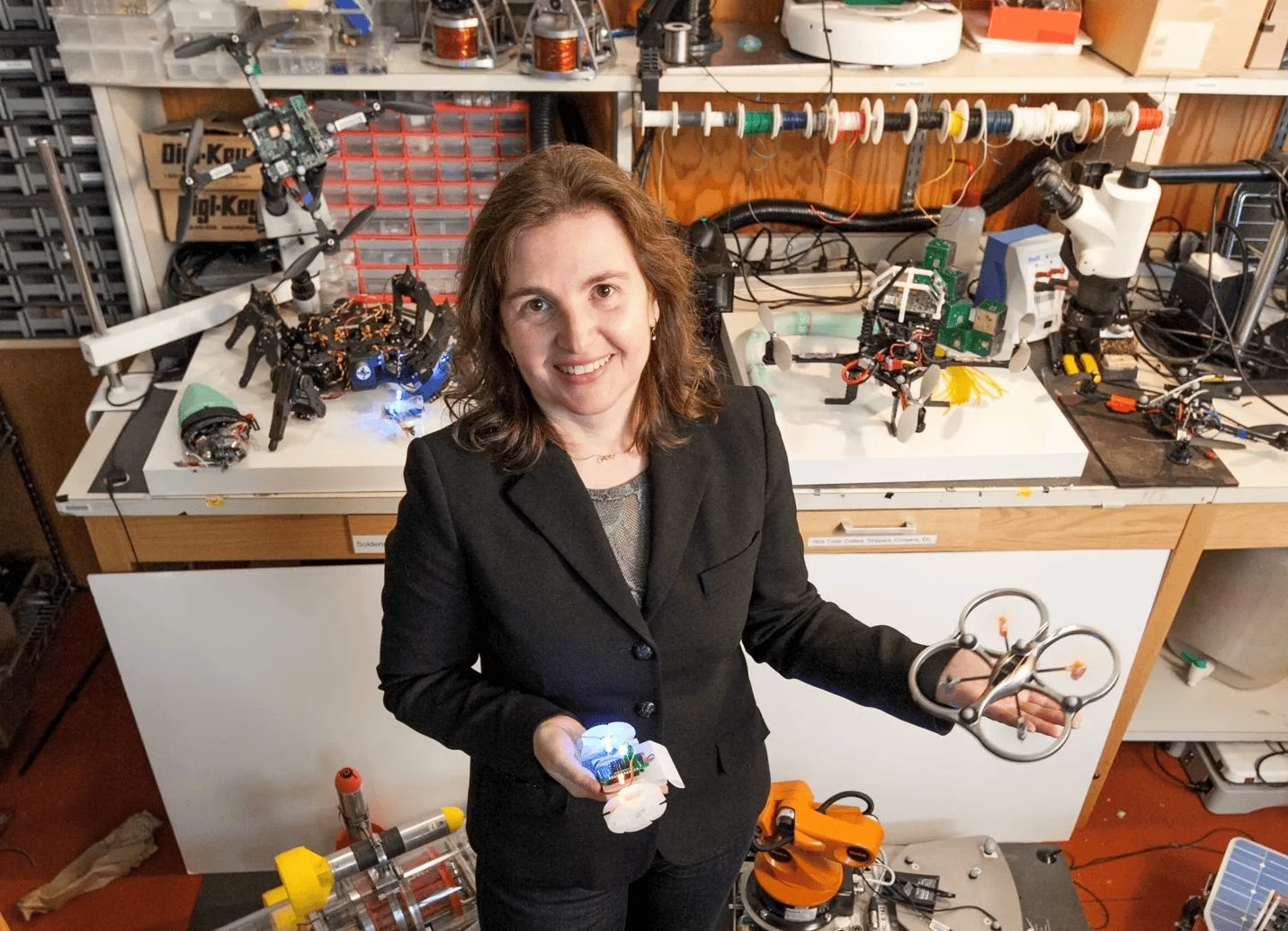VinFuture’s InnovaTalk Webinar assembled globally renowned AI experts
Moderating this webinar was Dr. Xuedong Huang, Chief Technology Officer (CTO) of Zoom Video Communications, Member of the VinFuture Prize Council and globally renowned AI leader and innovator with over 30 years of experience in computer science and artificial intelligence. He has laid the basic groundwork for Spoken Language Processing (SLP) for machine-learning systems, as well as other core AI functionalities. As CTO of Zoom Video Communications, Dr. Huang’s impact is widely acknowledged through his leadership and technological contributions, as well as his pioneering research in AI’s language learning.
Joining Dr. Huang in this panel were two distinguished speakers. The first was Dr. Eric Horvitz, Chief Scientific Officer at Microsoft. With a distinguished career that spans decades, Dr. Horvitz has been instrumental in pioneering advancements in AI, making significant strides in fields such as machine learning and human-computer interaction. Through his presentation, Dr. Horvitz explored the role of AI in accelerating productivity and capabilities. Additionally he expressed his belief in AI’s potential to help scientists and engineers to make significant progress on global challenges.
The second was Dr. Alex Ratner, the Co-founder and CEO of Snorkel AI and Affiliate Assistant Professor of Computer Science at the University of Washington. With the development of a new programmatic AI data labeling and training datasets management platform, Dr. Ratner and Snorkel AI have helped enable leading organizations worldwide to build robust machine learning models quickly and cost-effectively. Sharing with the audiences of InnovaTalk, Dr. Ratner discussed the critical role of data in developing AI, especially in the LLM era.
Last but not least, representing the Vietnamese computer science community was Assoc. Prof. Le Hoang Son, Vice Director of VNU Information Technology Institute, Vietnam National University, Hanoi. He introduced remarkable advancements in Generative AI research and applications achieved by Vietnamese scientists.
AI is a major technical leap for humanity
In his presentation, Dr. Eric Horvitz, who stands as a paragon of expertise in Artificial Intelligence, expressed his optimism about the capabilities and immense potential of Generative AI to help solve major global problems, as well as its power to accelerate productivity and capabilities. He highlighted the huge commercial success of GitHub’s Copilot as an example. Productivity studies have revealed that software developers using Copilot completed their tasks using 56% less time than those without it.
According to Dr. Horvitz, AI is still in its early stages of assisting scientists with modeling, reasoning, and making discoveries at multiple spatial and temporal scales, ranging from electrons and molecules, to human individuals and populations. In addition, AI methods have been used to predict millions of new stable materials, while AI pipelines have been developed to aid scientists worldwide in defining and harnessing these new materials.
As an example of an AI-centric pipeline, Dr. Horvitz elaborated on the collaboration between Microsoft and the Pacific Northwest National Laboratory to discover a new electrolyte candidate for battery that requires 77% less lithium than normal battery. It was reported that the result would have taken 20 years and nearly 2 billion dollars using traditional methods. However, with AI systems, pipelines and models, the cost was reduced to $350.000, and the process took about 80 hours, making it 2000 times faster.
Dr. Horvitz also expressed excitement about the future as AI applications have demonstrated significant impact in various fields, including Healthcare and Life Sciences, with notable applications in computational microscope, protein structure design, and new therapeutics discoveries.
Data expert discussing the future of Generative AI in the LLM era
Regarding the pivotal role of data in future development of AI, Dr. Ratner believed that data would be the key programming interface to AI today.
According to Dr. Ratner, current AI use cases could be effectively classified into two waves. The first is off-the-shelf LLMs, which are trained on a vast quantity of Internet data, to provide immediate values with low expectations for accuracy. The second wave comprises specialized LLMs, which are used when data requirements are very domain-specific and there is extremely high demand for accuracy, in order to serve more critical missions for organizations and enterprises.
Dr. Ratner emphasized that as LLM systems became more complex, black-box, and standardized, data would be the differentiator.
He also argued that high quality, curated and labeled data would become the most important tool for AI practitioners to develop specialized AI models, as this data is required for optimizing every specialization approach, from retrieval augmented generation (RAG) and fine-tuning, to alignment, and evaluation.
Generative AI in Vietnam’s developing context
Regarding the development of AI in Vietnam, Assoc. Prof. Le Hoang Son acknowledged that there was a gap of a year or two between global technology and the technology in Vietnam. However, in 2022 Vietnam’s Government AI Readiness Index scored the emerging economy 53.96 out of 100, 7 places up from the year before, bringing Vietnam to rank 55 out of 181 countries. Assoc. Prof. Le believed that in the next five years, the government would make a bigger investment in AI and automations, rather than in human resources. He expressed the Vietnamese government’s ambition for Vietnam to be one of the top 4 nations in ASEAN, and among the top 50 countries in the world in terms of AI research, development and technology by 2030.
To achieve this goal, Vietnamese researchers, scientists, and companies have been relentlessly pursuing advancements. Companies such as ViettelCyberspace, Elinext and Bot Ban Hang are driven to create demand for chatbot accessibility in healthcare and e-commerce, which in turn motivates further AI developments.
In terms of customized local Generative AI models, Association for Vietnamese Language and Speech Processing (VLSP) revealed that, unlike LLMs developed for other languages, the availability of publicly accessible evaluation data for Vietnamese LLMs is significantly limited. Assoc. Prof. Le also emphasized the importance of promoting the development of large language models for Vietnamese (VLLMs) by many domains, such as humanity, language, social science and history.
Regarding the prospects of multimodal and multimedia AI in Vietnam, Assoc. Prof. Le named Computer Vision Vietnam, VinBrain and FPT AI among the Vietnamese companies focusing their application on information extraction from ID, ID photos, X-ray image, face-matching and recognition.
Assoc. Prof. Le suggested that the next step involved executing AI operations with the GPU and SPC. In Vietnam, many corporations, such as Viettel, CMC, and FPT, have been planning to deploy AI operations and AIOps. The objective is to deliver data from different sources to a central place, and incorporate AI algorithms into the GPU and HPC to form the AI operations.
With the rapid development and application of AI, Assoc. Prof. Le also stressed the need to use AI responsibly. In conclusion, he emphasized that AI applications in Vietnam must adhere to ethical guidelines, focusing on safety and equality.
